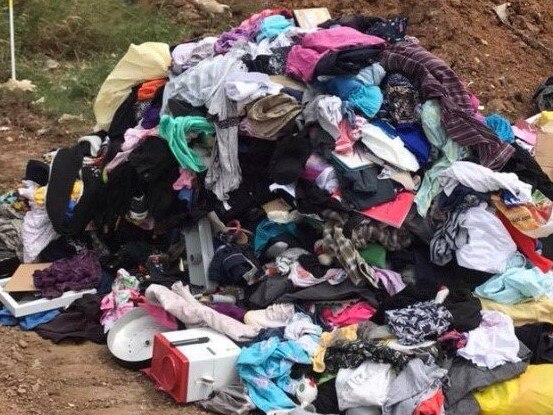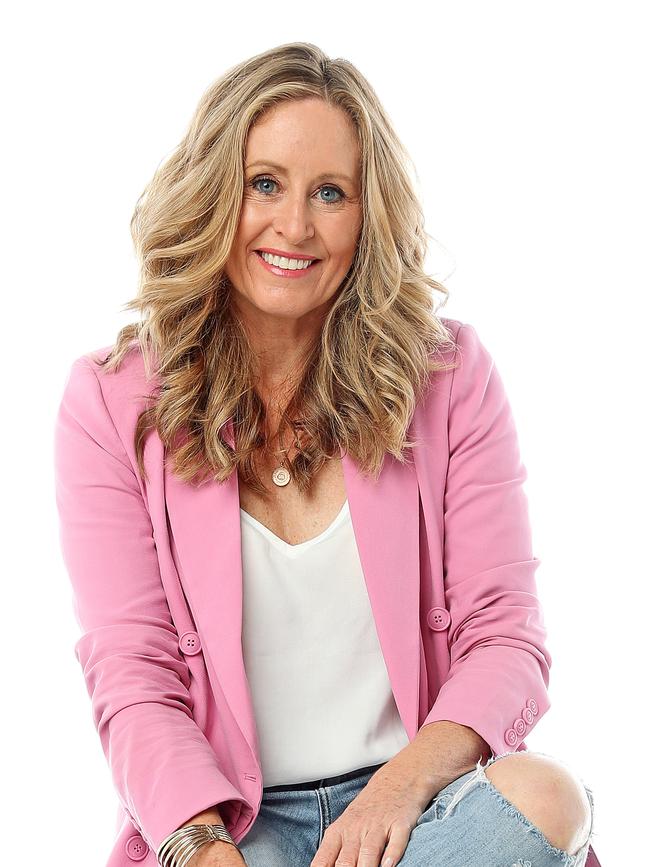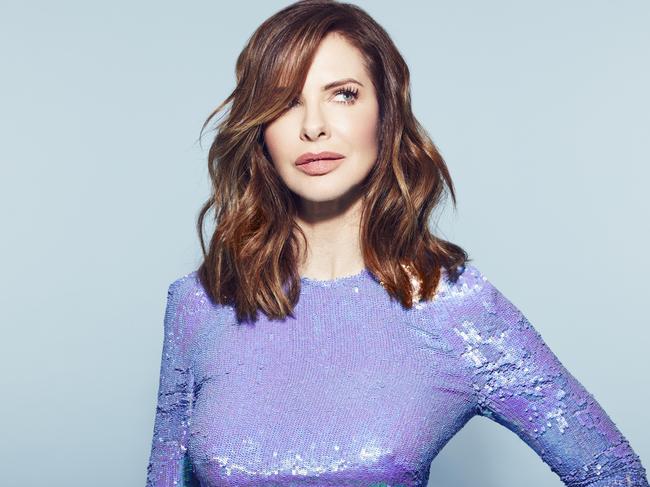Angela Mollard: Let’s dress well with less to close the fashion gap
Far from being a source of joy, fashion has become a fickle and morally questionable force which drives up inflation and deliberately fleeces women, writes Angela Mollard.
Opinion
Don't miss out on the headlines from Opinion. Followed categories will be added to My News.
Do you know what’s in fashion again?
Denim skirts.
Long ones with a slit up the front that only suit women who are celery thin, prepared to
sacrifice comfort for (questionable) style and don’t live in Australia where they are too hot for summer and not warm enough for winter unless you wear tights which, as we all know, are ick.
Sorry for the rant but as a new season approaches and we are again faced with headlines telling us what we should be wearing this winter, I want to opt out.
Like plenty of you, I’m struggling to pay the mortgage, hyperventilating over my electricity bills and eating more lentils than a vegan on an ashram retreat. I, therefore, do not need a denim skirt that I loathed in its three previous incarnations or anything else that Planet Fashion is currently trying to throw at me.
You can keep your Y2K aesthetic and your shoulder pads and your $8,820 Bottega Veneta flannel-printed leather shirt even if it comes with “complimentary” shipping and the label is hot right now thanks to Matthieu Blazy at the helm.
As I gallivant through midlife I realise I love clothes but I hate fashion. Far from being a source of joy, fashion has become a pernicious, fickle and morally questionable force which drives up inflation and deliberately fleeces women. How else to explain the maddening hamster wheel of on-trend colours, hemlines, jean widths, shoe heels, sleeve shapes, sneaker brands and jewellery styles while men can happily saunter through an entire decade in the same jeans and a couple of linen shirts.

Never mind the gender pay gap, we’re victims of an insidious fashion gap which leaves us with overstuffed wardrobes, meagre superannuation and an addiction that has us always clamouring for more.
With social media influencers blurring the line between inspiration and commerce, fashion with accompanying links to buy constantly flash past our eyes, normalising consumption and neglecting sustainability. “Dopamine dressing”, the expression beloved by these self-styled spruikers who are often getting kickbacks, is not some natural high you get from wearing bright colour, it’s an obsessive belief that life might be that little bit lovelier if you buy that one special thing.
I’ve written before about the eyelash economy – the impoverishment faced by women if they buy into the notion that our faces and bodies need expensive maintenance and improvement – but fashion fleecing is potentially worse. You don’t HAVE to have eyelash extensions but you do have to be clothed ergo the opportunities to be seduced and thus reduced – both financially and emotionally – are limitless.

So what’s the alternative? Timeless grey flannel and a face to match? Not at all. We need to switch our thinking to celebrate what we have not what we want. Go right now and look in your wardrobe. Pull out seven things you love. For me that’s a five-year-old dusky blue Zara coat, a pink Gorman jumper with yellow sleeves (2 winters ago), lilac J Crew pants ($12 from Salvos), some lobster-embossed slip-on Kurt Geiger shoes ($18), again from Salvos, a pair of Uniqlo pinstriped pants (very old), a navy Marks & Spencer merino crew knit (my mum has one that’s lasted 20 years) and a white broderie anglaise dress that I picked up years ago in a sample sale and wash carefully because I never want it to wear out.
I love all those things. They suit me and wearing them makes me happy. Just yesterday a man in the supermarket said my lobster slip-ons were “rather eye-catching” but we lose our delight in clothes if we see them as a means of keeping up or staying relevant. Far more interesting than an overstuffed wardrobe is chutzpah, playfulness and the curiosity to put together outfits from what you have.

Every woman I know is obsessed with British makeup maven Trinny Woodhall and her wonderful Instagram reels showing how she styles a look. But having admitted she needs to stop buying more clothes, there’s something discomfiting about her constant spending sprees in Zara when most of her audience is struggling with a cost-of-living crisis.
I’d love it if she went into a second-hand shop and showed her audience how to pull together a pre- loved outfit. Some industry experts are reading the mood better than others.
In the UK a group of fashion editors have committed to buying just five items of clothing this year after the Hot or Cool institute suggested it was the most effective way to ensure the fashion industry’s emissions are in line with the Paris Agreement goal of keeping the global temperature rise below 1.5C.
Here Fiona Milne, a personal shopper who publishes the online FiFi Report and grows her audience through the Instagram handle @shopwithFiFi, admits shapes change and staples like white shirts and trench coats need to be updated – everything is currently oversized – but she at least shows the most cost-effective ways to modernise.
Ultimately, women need to cultivate the ability to dress well with less because there is
nothing more sustainable or financially empowering than wearing, with a smile and self-
possession, what you already own.




